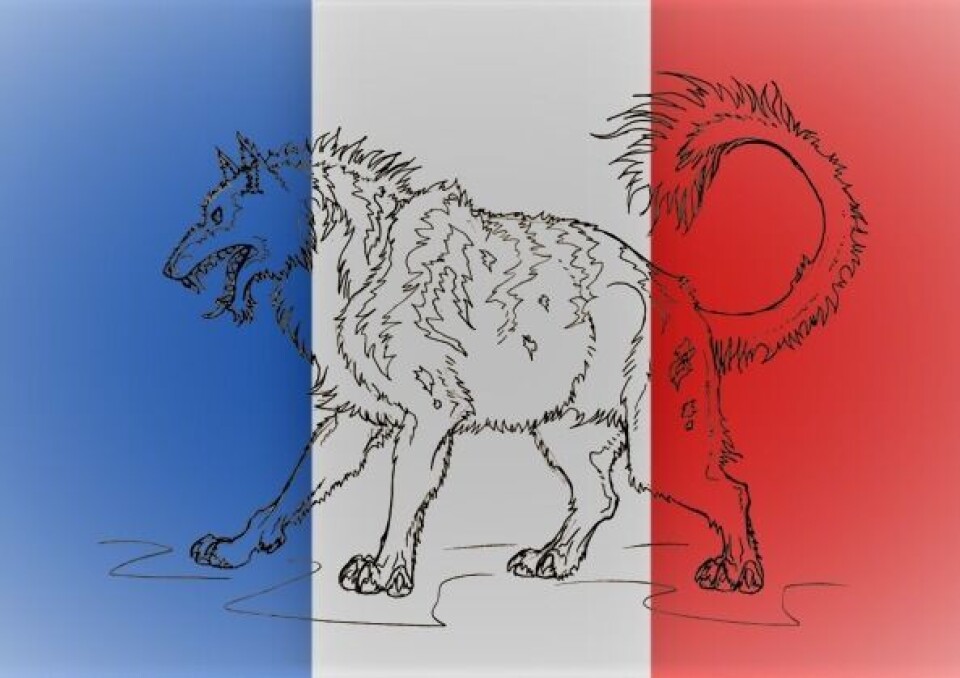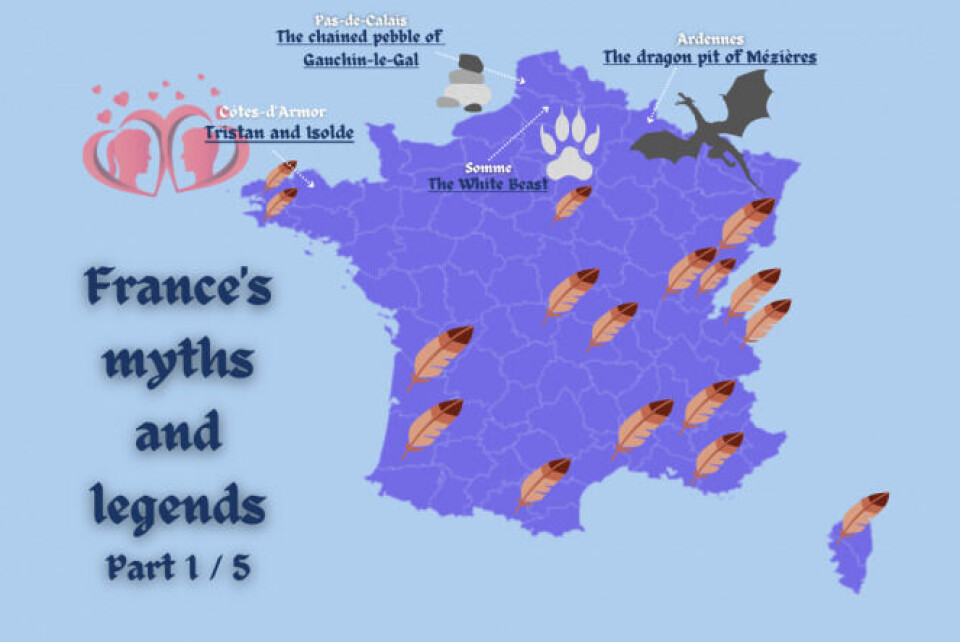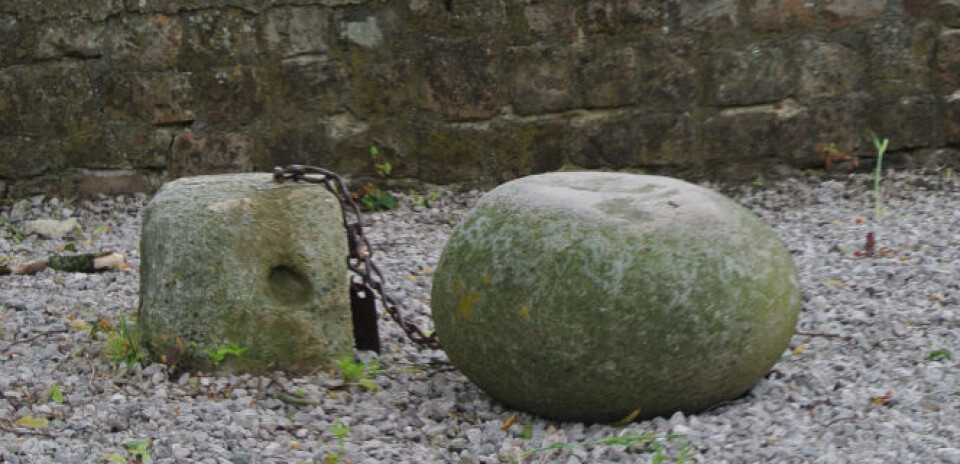-
Step back in time for some ‘dinosaur’ planting in your French garden
Captivated in the garden this month by one species of plant that dates back 200 million years, and another which is one of the oldest flowering plant families on the planet
-
Classic French recipe with an exotic twist: caramelised onion soup
A dish inspired by the travels of two Paris chefs
-
HPI final season: the end of a French TV phenomenon
Comedy-thriller starring Audrey Fleurot that gripped France airs final episodes
French legends part 1: Beasts and beauty - stories from the north
We look at the White Beast of Picardy, an insolent and enchanted stone, a romantic epic and a dragon’s pit in the first of a five-part series

France is a country full of exciting history, from kings and queens to emperors and presidents, it has had its fair share of interesting moments - but it is also home to some far more fantastic stories.
All over the country are local tales of monsters, dragons, ghosts, ghouls, mythical warriors and lost cities.
Read more:Five French stories that mix history and myth - from Caesar to Clovis
In this first article of a five-part series, we chart some of the myths and legends from around the country, beginning in the north of the country.
In the next installations (one will be published every Friday), we will look at legends from the east, south, west and centre of France.
In our map below you can see the stories we will cover in this article as well as those we will cover later in the series, for the moment hidden. Can you guess the legends we will cover later?
If you know of any local legends from your area, please let us know at news@connexionfrance.com and we may include it in a future article.

The gal of Gauchin-le-Gal
If you visit the village of Gauchin-Légal, also known as Gauchin-le-Gal, in Pas-de-Calais, and stroll near the church, you may see the strange site of a large-ish stone chained up to another stone.
This is the legendary gal de Gauchin-le-Gal. The story goes that the stone, once unchained and free to roam, used to awaken in the night and clatter around the town until it found the house of a man who was being cheated on by his wife. After causing a great raucous, the stone would settle by the man’s door and lie there until the next morning.
As you can imagine, this rather irked quite a few people.
The stone eventually went quiet but during the years of World War One, 1914 - 1918, it returned and once again began its night-time wanderings.
Finally, rumour has it that an American soldier stationed in France by the name of Henry Selden Bacon took decisive action and chained up the stone for good.
You can see it still in the village's square, chained to another rock. A spokesperson for the local tourism office of Béthune-Bruay said that interested tourists can go on a hike that passes by the stone called the hike of the devil's stone. It is 17km and takes just over four hours. For more information, see here.

Tristan and Isolde (Brittany)
It is one of the greatest tragic love stories in European history. The story of Tristan and Isolde is believed to have originated in Brittany in northwest France at a time when Britons lived on both sides of the English channel.
It tells of the doomed love between Tristan, a knight from Cornwall, and Isolde, a princess from Ireland. The tale has many different versions and has been adapted by writers and poets all around Europe.
At some point in history, the story started to be incorporated into Arthurian legends, with Tristan named as one of King Arthur’s knights of the round table.
In one version of the tale, Tristan, the nephew of King Mark of Cornwall, is injured in a combat with an Irish warrior, sent to Cornwall to demand tribute. Marc sends Tristan to Ireland to seek out Isolde who is said to be a great healer. Tristan becomes besotted by Isolde and on his return to Cornwall he raves about her so much that Marc decides to demand her hand in marriage.
This causes conflict between Tristan and Marc and Tristan eventually leaves Cornwall to go to Brittany. He ends up marrying another Isolde there, but still harbours a deep love for the Irish princess.
The story ends in tragedy. Tristan, again injured, calls on the Irish Isolde to heal him. He says that if she agrees, she should arrive in a ship bearing white sails. If she refuses to come, she should send a ship with black sails.
When a ship appears on the horizon, Tristan asks his wife Isolde what colour the sails are. Beset by jealousy, Tristan’s wife lies and says they are black. Tristan falls into despair and dies.
When the Irish Isolde arrives to find him dead, she too dies of grief.
The dragon pit of Mézières (la fosse au dragon de Mézières)
An old legend surrounds one part of the river Meuse that flows through the town of Charleville-Mézières (Ardennes).
Mézières used to be a town in its own right before it was merged with Charleville in the 1960s, and it is said that every Macérien (locals of Mézières) knows about the dragon pit.
It is a certain part of the river that is particularly deep and where whirlpools often form. Local rumours say that many careless bathers have been swept into the pit and never resurfaced.
There are a few different stories about how the pit was formed, but one legend goes like this.
A monk from Mézières living at the end of the 12th century fell in love with a nun living in a nearby convent. Breaking their oaths of celibacy the couple got together and soon the nun fell pregnant. By way of punishment, God cursed the nun’s child and it was born a fearsome dragon.
It is said the dragon would eat children and young girls and terrorise the locals.
Finally, it was decided that the beast must be taken care of so brave knights, monks and a bishop set out to defeat it. After the bishop sprinkled holy water on it, the saviours captured the dragon. They decided that it should be killed, rather than just imprisoned, and chose to throw it into the river Meuse. While it was desperately trying to escape the river, it dug out the riverbed with its claws, carving the pit that remains today.
Read more about the legend here (in French).
The White Beast of Picardy
The story of the white beast of Picardy, la bête blanche de Picardie, was first written about by Emilien Guilbert in 1880. The legend has changed over the years, but the general story goes as follows.
A man is walking home into his village in Picardy - a former region in northern France - under a full moon. He passes by an alfalfa field and suddenly hears a noise. It sounds like a dog running through the field, rustling the plants. He calls and whistles but gets no response so continues on his way.
Then he hears the sound again, sometimes from the left, sometimes from the right. He keeps walking.
Suddenly a large white beast pounces and passes under the man's legs and then begins to turn rapidly round and round the man. The man hits out with his stick but cannot strike the beast, which continues its swirling dance around the man.
Unable to do anything about it, the man continues on his way with the strange white creature turning all around him.
He eventually reached the edge of his village and suddenly the beast transformed into a man. No sooner does the walker see this than the transformed man disappears.
The myth seems to resemble stories of werewolves, which are popular in European folklore. Luckily for the protagonist of this story, the White Beast of Picardy was not a violent wolf.
The above map is also part of our ongoing series showcasing different elements of French society and culture through maps.
We have also written aboutFrench inventors,cheeses,funny commune names,local sweets and desserts,local aperitifs and many other topics.
If you have any suggestions for maps you would like us to make or think we should add anything to our previous articles, let us know at news@connexionfrance.com.
Related stories
Urban myth or true: Is it illegal to call a pig Napoleon in France?
Truth or myth?: Napoleon and the story of the truncated pyramid cheese
What does ‘de’ mean in a French surname: Is it a sign of nobility?
























